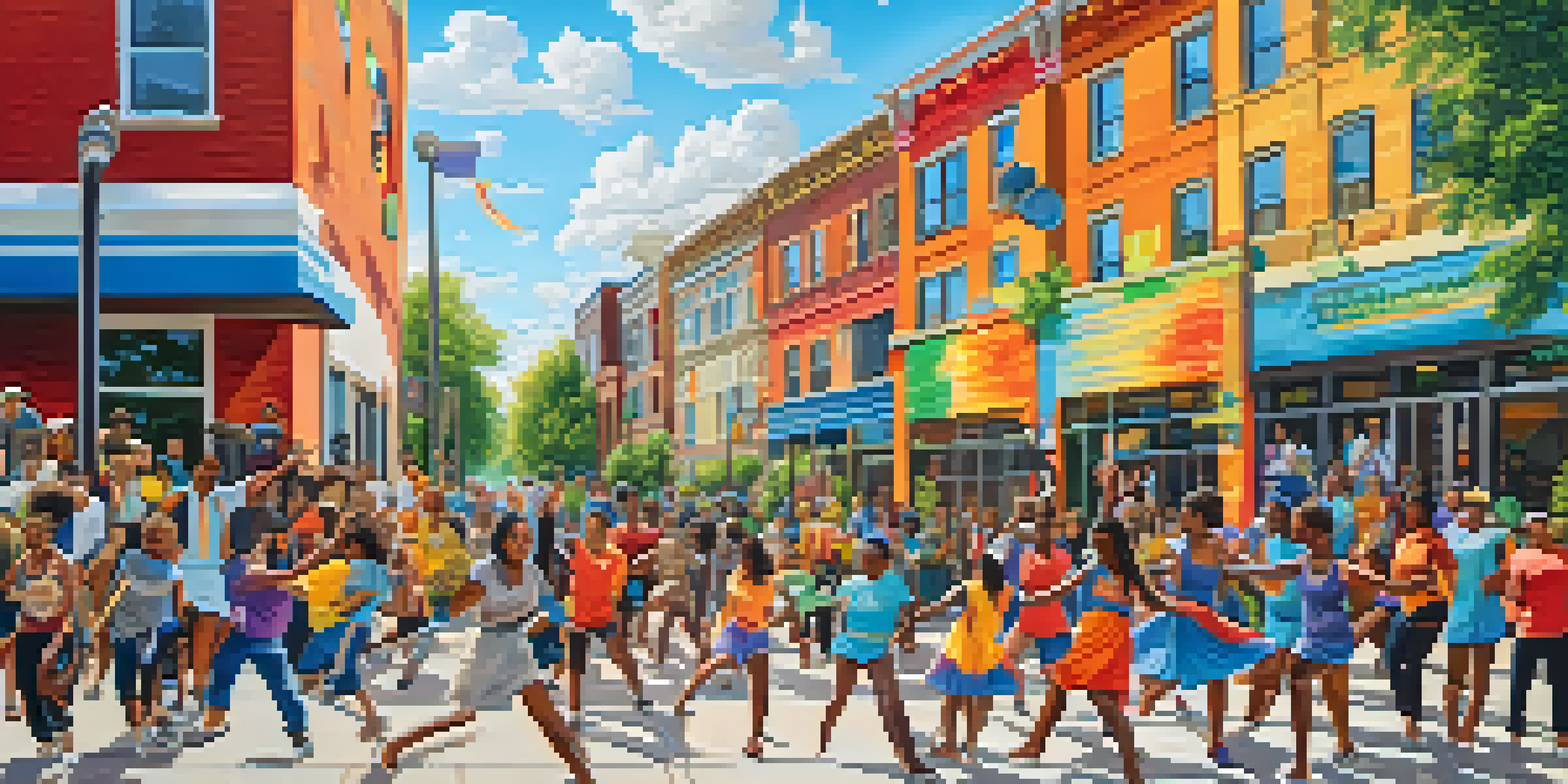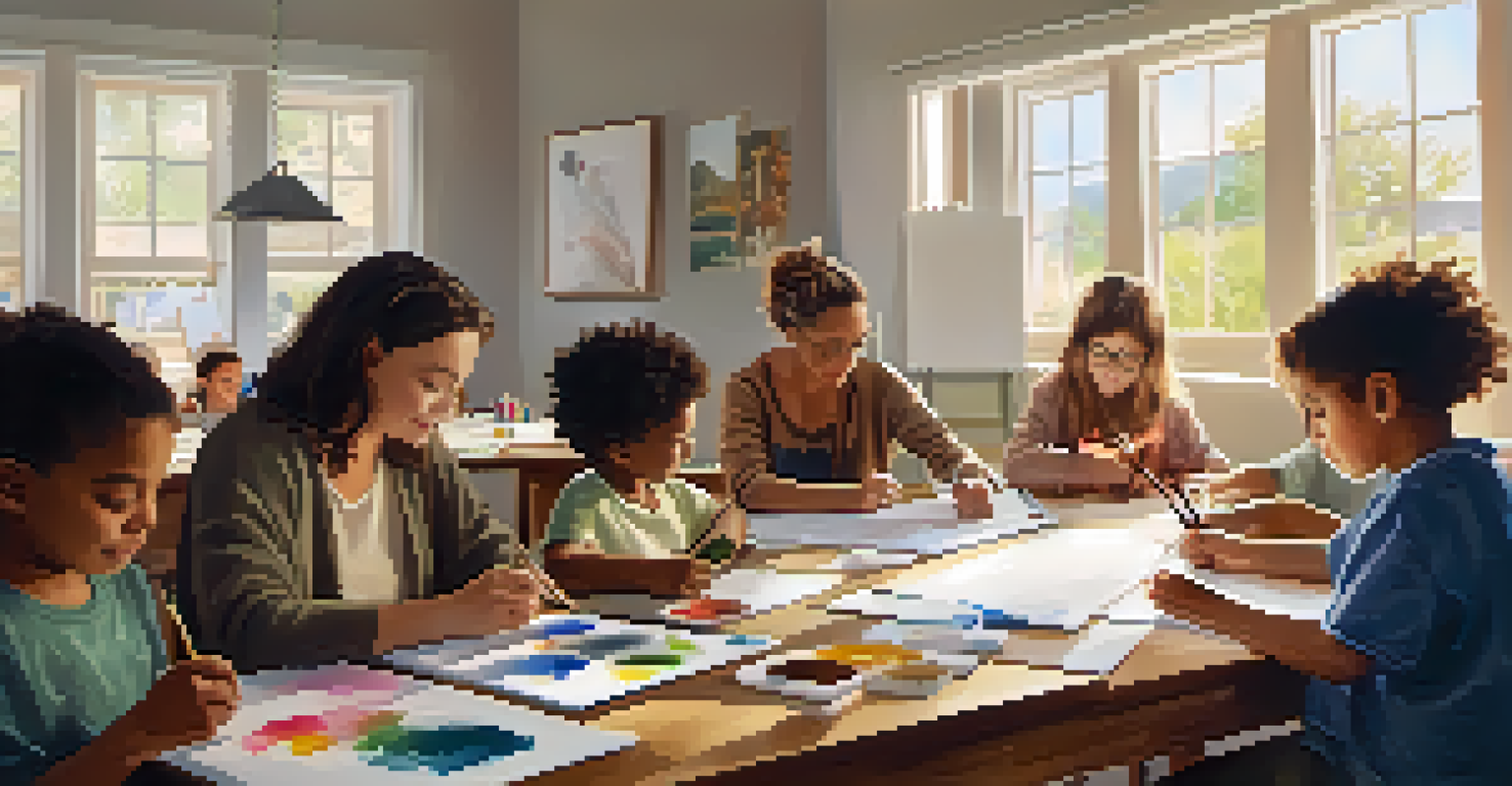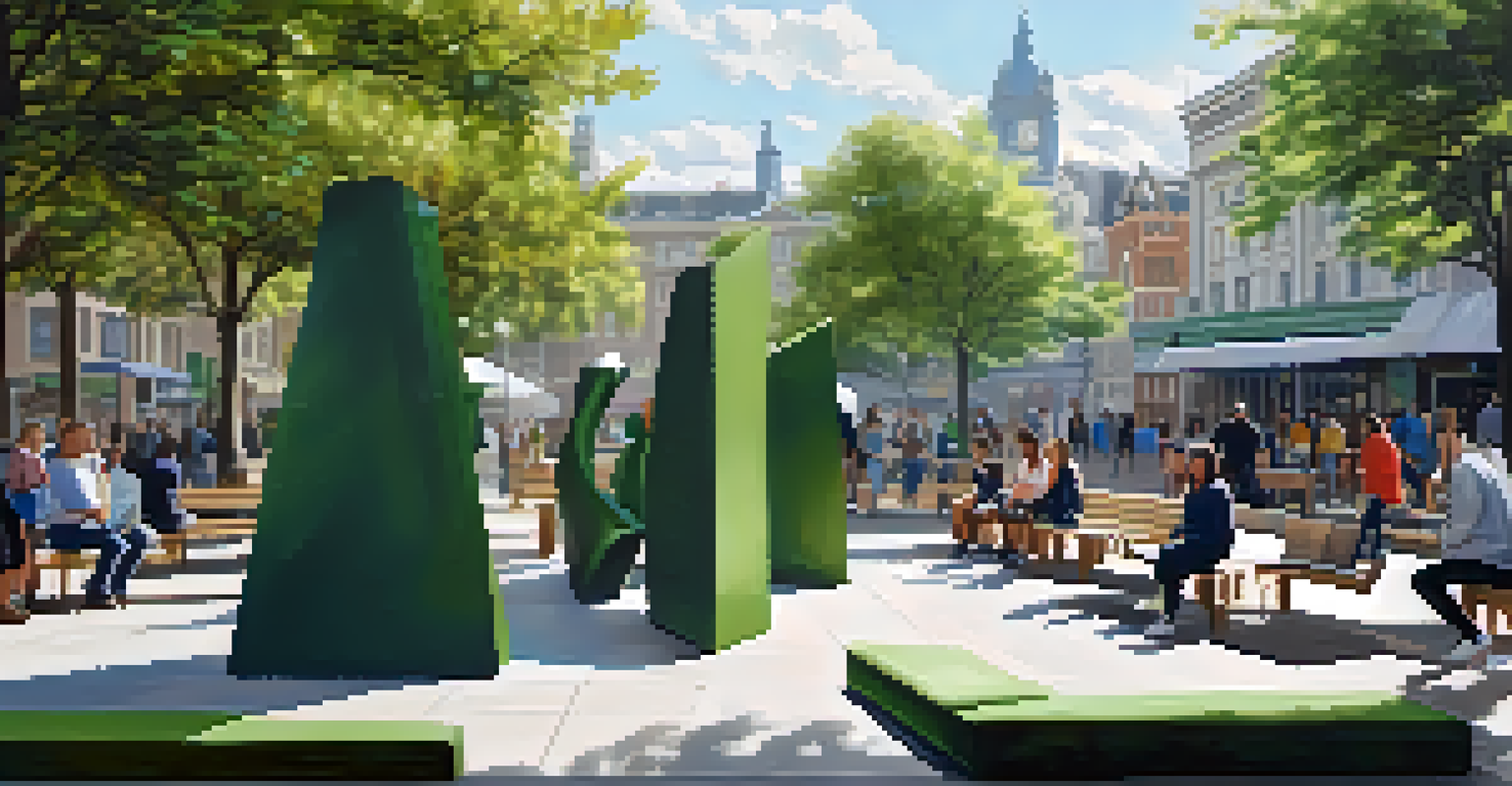Art and Public Health: A Global Perspective on Initiatives

The Intersection of Art and Public Health: A Vital Connection
Art and public health may seem like unlikely companions at first glance, but they share a profound connection. Art can evoke emotions, provoke thought, and inspire change, making it a powerful tool in promoting health and well-being. By integrating artistic expression into health initiatives, communities can address pressing health issues while fostering a sense of belonging and identity.
Art enables us to find ourselves and lose ourselves at the same time.
For instance, murals and public installations can transform neglected spaces into vibrant community hubs, encouraging social interaction and mental wellness. Additionally, art-based programs can provide therapeutic benefits, helping individuals cope with trauma and anxiety. This synergy between art and health emphasizes the importance of holistic approaches in addressing public health challenges.
Ultimately, understanding this intersection can lead to innovative solutions that enhance individual and community health outcomes. By recognizing the value of creativity in health initiatives, we can foster environments where art flourishes alongside public health efforts.
Art as a Tool for Mental Health Awareness
Mental health remains a significant concern globally, with stigma often preventing individuals from seeking help. Art initiatives play a crucial role in breaking down these barriers by sparking conversations and raising awareness. Programs that incorporate art therapy, for example, allow individuals to express their feelings and experiences in a safe and creative way.

In many communities, artists collaborate with mental health professionals to create workshops where participants can explore their emotions through various mediums. This not only promotes mental wellness but also encourages participants to connect with one another, reducing feelings of isolation. By showcasing artwork that reflects personal journeys, these initiatives can inspire others to seek help and share their stories.
Art Enhances Community Health
Integrating art into public health initiatives fosters social interaction and promotes mental well-being in communities.
Moreover, public art installations focused on mental health can serve as powerful reminders of the importance of caring for one's mental well-being. By fostering open dialogue about mental health through art, communities can cultivate a culture of support and understanding.
Promoting Physical Health Through Artistic Engagement
Art is not just about mental wellness; it can also promote physical health in various ways. Engaging in artistic activities, such as dance, theater, or even painting, encourages movement and can lead to healthier lifestyles. Programs that incorporate physical activity with creative expression can motivate individuals to adopt healthier habits while having fun.
Creativity is intelligence having fun.
For example, community dance classes not only provide a form of exercise but also foster social connections among participants. This combination of physical activity and social interaction can significantly improve overall health outcomes. By focusing on the joy of movement through art, communities can inspire individuals to prioritize their physical health without it feeling like a chore.
Additionally, art initiatives that address nutritional education, such as cooking workshops, combine creativity with healthy eating practices. These programs not only teach valuable skills but also emphasize the importance of nutrition in maintaining physical health.
Cultural Expressions in Health Promotion: A Global Perspective
Around the world, diverse cultures utilize art to promote health in unique ways. Cultural expressions, such as traditional dance, music, and visual arts, serve as vital tools for health education and awareness. By incorporating local customs and practices into health initiatives, communities can create more relatable and effective programs.
For instance, indigenous communities often use storytelling and dance to convey health messages, ensuring that these initiatives resonate with the audience. This culturally sensitive approach fosters trust and engagement, leading to better health outcomes. Moreover, it empowers communities to take ownership of their health narratives, enhancing their connection to the initiative.
Art Breaks Mental Health Stigma
Art initiatives encourage open conversations about mental health, helping to reduce stigma and inspire individuals to seek help.
By embracing cultural expressions in health promotion, we can create a more inclusive and effective approach to public health. Understanding and respecting local traditions can lead to more successful health interventions that genuinely reflect the community's values and beliefs.
Art in Health Campaigns: A Case Study Approach
Case studies of successful art-based health campaigns illustrate the power of creativity in public health. One notable example is the 'HIV is No Joke' campaign that used humor and art to educate young people about HIV prevention. Through engaging visuals and relatable messaging, the campaign reached a wider audience and effectively conveyed critical health information.
Another compelling case is the 'Art for Health' initiative in the UK, which integrated art projects into healthcare settings. Patients and healthcare providers collaborated on art pieces that adorned hospital walls, creating a more welcoming environment. This initiative not only improved patient morale but also enhanced healing experiences by making healthcare spaces feel less clinical.
These case studies highlight the potential of art to transform health campaigns into impactful and memorable experiences. By leveraging creativity, public health initiatives can resonate more deeply with their target audiences, ultimately leading to improved health behaviors and outcomes.
Community Engagement: Building Healthier Futures Through Art
Community engagement is essential for the success of art-based health initiatives. Involving local residents in the creation and execution of these programs fosters a sense of ownership and pride. When communities actively participate in art projects, they not only contribute to the aesthetic of their environment but also strengthen social bonds.
For example, neighborhood mural projects often involve residents in the design process, allowing them to express their collective identity and aspirations. This collaborative effort can enhance community cohesion and lead to improved mental and emotional well-being. Furthermore, when people feel connected to their surroundings, they are more likely to take pride in caring for their community’s health.
Culture Enriches Health Campaigns
Incorporating cultural expressions into health promotion leads to more relatable and effective public health programs.
By prioritizing community engagement in art initiatives, we can build healthier futures where art and health coexist harmoniously. This collaborative spirit not only enriches communities but also empowers individuals to take charge of their well-being.
The Future of Art and Public Health: Opportunities Ahead
As we look ahead, the potential for integrating art into public health initiatives continues to grow. The rise of digital platforms provides new avenues for artistic expression, enabling wider reach and engagement. Virtual art exhibitions and online workshops can connect individuals across the globe, fostering a sense of community around health issues.
Moreover, as public health challenges evolve, so too must our approaches to addressing them. Innovative collaborations between artists, health professionals, and policymakers can lead to groundbreaking initiatives that leverage creativity in tackling complex health issues. By embracing interdisciplinary approaches, we can create more effective and inclusive public health strategies.

Ultimately, the future of art and public health is bright, with endless possibilities for enhancing health outcomes through creativity. By nurturing this relationship, we can inspire individuals and communities to embrace healthier lifestyles while celebrating the transformative power of art.